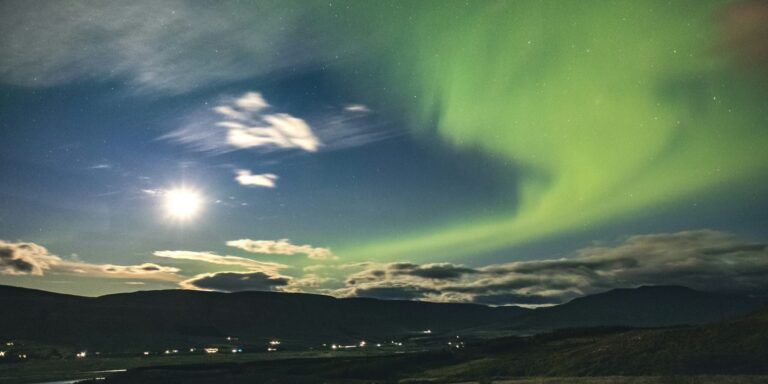Geomagnetic storm fuels one of the most widespread auroral displays in recent U.S. history
Americans from Alaska to the Great Lakes are preparing for a dazzling natural light show tonight, as the aurora borealis—better known as the Northern Lights—becomes visible across an unusually wide swath of the United States. The forecast comes from NOAA’s Space Weather Prediction Center, which has confirmed that a G2-class geomagnetic storm will bring a rare and vibrant display of auroras well beyond their typical range.
A Celestial Phenomenon Reaches New Audiences
Traditionally reserved for viewers in Alaska, northern Canada, or Scandinavia, the auroras are expected tonight as far south as northern Michigan, Wisconsin, Minnesota, North Dakota, and even parts of Montana and Washington State. This expanded visibility is due to a significant coronal mass ejection (CME) from the sun that reached Earth’s magnetic field early Monday morning.
The result: shimmering waves of green, pink, and violet light will paint the northern skies, offering a rare opportunity for millions of Americans to witness one of nature’s most beautiful atmospheric events. For photographers and stargazers, this could be a once-in-a-decade viewing experience.
“We’re entering a peak phase of Solar Cycle 25, which naturally increases geomagnetic activity,” said Dr. Allison Vega, a solar physicist at the University of Colorado Boulder. “What we’re seeing this week is the kind of auroral event that’s usually confined to Arctic regions—now on display for the Lower 48.”
How, When, and Where to See It
Best viewing times are between 10:30 p.m. and 2:00 a.m., local time. NOAA recommends traveling to high-elevation or open rural areas with minimal light pollution. Clear skies and northern-facing horizons will yield the best visibility. Use smartphone night modes or long-exposure cameras to capture the event if the auroras aren’t visible to the naked eye.
Those in the far southern U.S. won’t see much, but the online astronomy community is already planning live streams from Michigan’s Upper Peninsula and northern Minnesota’s Boundary Waters.
“Just step outside and look up,” said Vega. “You may see skyglow you’ve never experienced before.”
Educational and Scientific Value
Beyond aesthetics, these solar events are also important for science education and public interest in astronomy. NASA and local science centers have promoted aurora events to help explain space weather and how solar activity affects Earth’s magnetic field, radio communication, and even power grids.
With more solar activity expected through late 2025 and into 2026, this could mark the beginning of a renewed public interest in space weather events—drawing families, students, and amateur scientists outdoors for hands-on learning under the stars.


